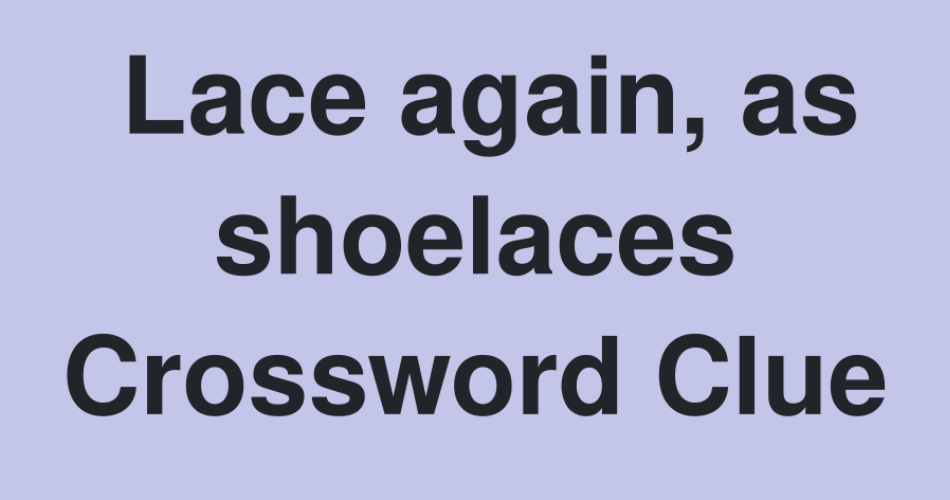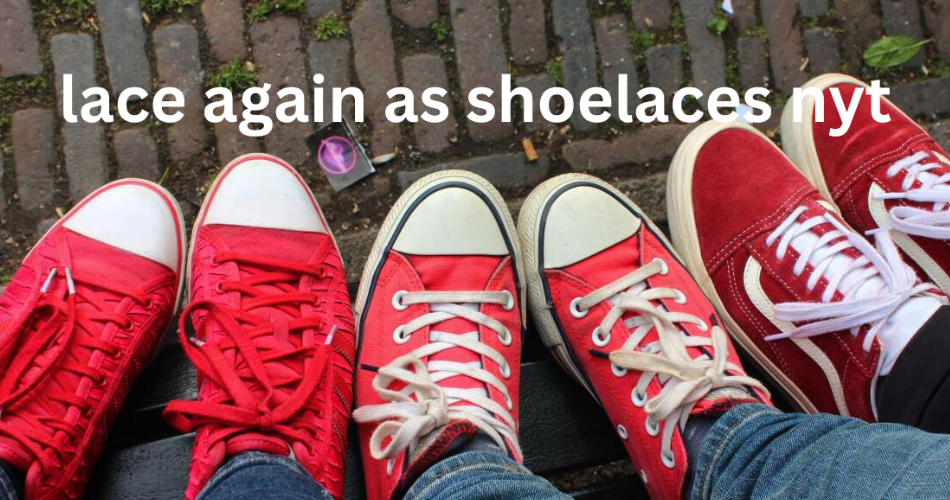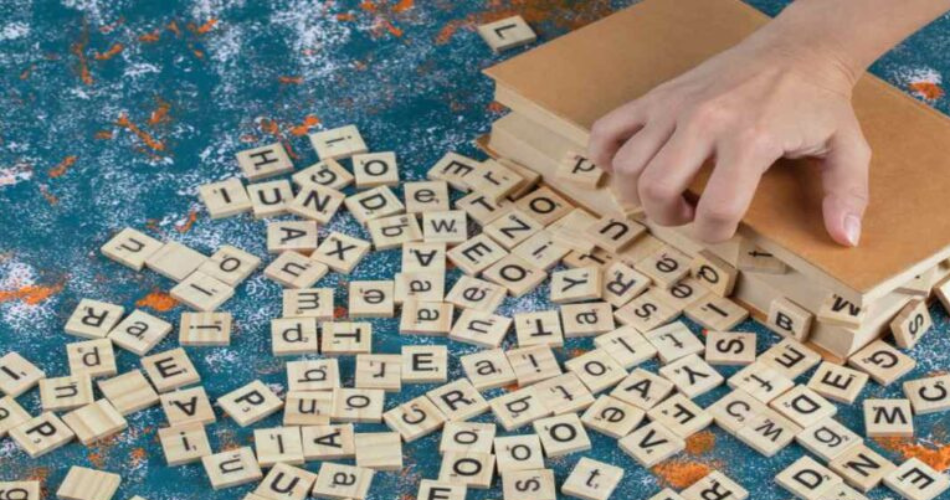
Unraveling the Mystery: The Answer to ‘Lace Again As Shoelaces Nyt’ Revealed
Introduction
Welcome to the captivating universe of crossword puzzles, where each clue is a gateway to a world of linguistic creativity and problem-solving. Today, we’re delving into a particularly challenging clue from the New York Times Crossword Puzzle: “Lace Again As Shoelaces Nyt.” This clue has sparked considerable debate among puzzle enthusiasts. Let’s decode the answer, uncover intriguing facts about shoelaces, and explore the occasional controversies surrounding such clues.
Decoding the Clue: “Lace Again As Shoelaces Nyt” in the NYT Crossword
For crossword puzzle enthusiasts, deciphering the clue “Lace Again As Shoelaces Nyt” in the New York Times Crossword Puzzle can be both stimulating and perplexing. This clue not only tests our vocabulary but also challenges us to think creatively and make connections in unique ways.
Crossword puzzles, especially those crafted by the New York Times, are renowned for their ability to stretch our cognitive abilities and encourage us to reinterpret familiar terms and concepts. A clue like “Lace Again As Shoelaces Nyt” demonstrates the inventive nature of crossword construction and the intellectual pleasure derived from solving them. It invites solvers to consider how something as mundane as shoelaces can be cleverly linked to wordplay.
When approaching such clues, it’s essential to engage in lateral thinking and let your creativity lead you. In the case of “Lace Again As Shoelaces Nyt,” the solution lies in understanding the context and applying the right term.
Solution to the Clue
The answer to the New York Times Crossword Puzzle clue “Lace Again As Shoelaces Nyt” is “RESTRING.” This term perfectly encapsulates the action of re-lacing shoelaces by threading them through the eyelets again. The word “restring” reflects the process of adjusting and securing shoelaces, making it a fitting and straightforward solution.
Successfully solving crossword clues involves more than just knowing definitions; it requires a knack for connecting words and concepts in innovative ways. “Restring” not only fits seamlessly into the puzzle but also exemplifies how even simple tasks can be represented with elegance and precision in crossword clues. When faced with challenging clues like “Lace Again As Shoelaces Nyt,” remember that often the most fitting answer is the one that is both straightforward and logically sound.
Fun Facts about Shoelaces and Crossword Puzzles
Shoelaces and crossword puzzles might seem unrelated, but they both have interesting histories and quirky facts that make them worth exploring.
The History and Evolution of Shoelaces
Shoelaces have been an essential component of footwear for centuries. Their history dates back to the 17th century when they were primarily crafted from leather. As time progressed, the materials used for shoelaces evolved, leading to the use of cotton, nylon, and various synthetic fibers in modern times. Shoelaces are designed to be both functional and aesthetically pleasing, with continual improvements made to enhance their style and utility.
The Rise of Crossword Puzzles
In contrast, crossword puzzles emerged as a popular pastime in the early 20th century. The New York Times Crossword Puzzle, renowned for its intricate and clever clues, has cultivated a dedicated following among puzzle enthusiasts. Daily, solvers anticipate the release of new puzzles, eager to challenge their intellect and solve the cleverly constructed clues.
An interesting example of how everyday items intersect with crossword puzzles is the clue “Lace Again As Shoelaces Nyt.” This type of clue exemplifies how commonplace objects are cleverly incorporated into wordplay, demonstrating the inventive and playful nature of crossword puzzle design. Such clues not only test the solver’s knowledge but also highlight the creative ways in which language and daily life intertwine in the world of puzzles.
Controversy Surrounding the Clue and Its Answer
The New York Times Crossword Puzzle often stirs up debate, and the clue “Lace Again As Shoelaces Nyt” is a prime example. This particular clue elicited mixed reactions from enthusiasts. Some felt that the solution, “Retie,” was too simplistic for such a cryptic hint, while others found it to be cleverly straightforward.
Critics of the answer contended that “Retie” was overly obvious and fell short of the challenging nature typically expected from NYT crosswords. They believed the clue lacked the depth and complexity usually associated with the puzzle’s reputation.
Conversely, proponents of the answer appreciated how “Retie” seamlessly fit both the given clue and the puzzle’s design. They argued that the perceived simplicity of the answer was actually a testament to the puzzle’s refined elegance and clever construction.
This debate underscores the intricate nature of crossword solving, which goes beyond merely finding answers to involve a creative interpretation of clues. The discussions about clues like “Lace Again As Shoelaces Nyt” highlight the artistry and skill that goes into crafting and solving crossword puzzles.
Possible Alternate Answers and Explanations
In the world of crossword puzzles, it’s not uncommon for a clue to have multiple interpretations. For the New York Times Crossword Puzzle clue “Lace Again As Shoelaces Nyt,” there are several potential alternative answers that solvers might consider.
Tighten
One possible phrase to describe the action of securing shoelaces is “tighten.” This term refers to the process of making the laces snug and secure. “Tighten” implies adjusting the laces to ensure they are properly fitted, preventing them from coming undone. It is a straightforward term that emphasizes the act of making sure the laces are firmly held in place.
Fasten
Another term that fits well in the context of shoelaces is “fasten.” To “fasten” means to attach or secure something firmly. When applied to shoelaces, it involves ensuring the laces are neatly tied and held in place. While “fasten” conveys the general idea of making the laces stay in position, it does not specifically address the detailed process of adjusting the laces for a perfect fit.
Secure
“Secure” is another relevant term that relates to making sure something is firmly in place. When talking about shoelaces, “secure” means ensuring that the laces are fastened in such a way that they do not come loose. Although “secure” focuses on the end result of having the laces firmly held, it might not fully capture the specific process of adjusting or re-lacing them.
Each of these phrases offers a unique perspective on the action of managing shoelaces. While “tighten” might highlight the adjustment process, “fasten” and “secure” emphasize the end goal of keeping the laces in place. Exploring these alternative terms not only enriches our understanding of language but also adds depth to the discussion of how we secure our footwear.
Conclusion
In the world of crossword puzzles and shoelaces, the clue “Lace Again As Shoelaces Nyt” from The New York Times Crossword has intrigued and entertained many enthusiasts. The answer, “Retie,” brings a clever twist to the puzzle, highlighting the inventive nature of crossword clues.
Shoelaces, while often overlooked, come with a fascinating history and are crafted from a wide array of materials. In the same vein, crossword puzzles provide intellectual engagement and amusement globally. The discussions sparked by clues like “Lace Again As Shoelaces Nyt” underscore the skill and creativity involved in both creating and solving these puzzles.
As you work on your next crossword or adjust your shoelaces, savor the thrill of solving a challenging clue or finding the perfect knot. Whether you’re retying your laces or conquering a tricky crossword grid, relish the journey of discovery and the satisfaction that comes with it.
Stay in the know with the latest news and updates on MumbaiBreaking

